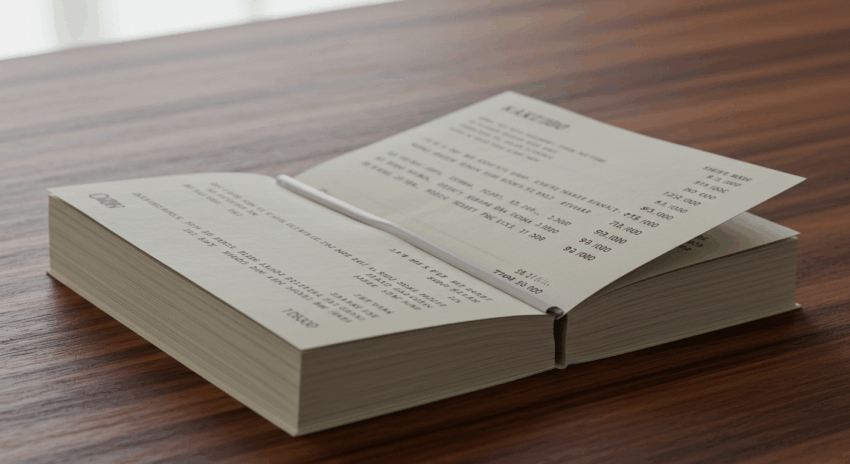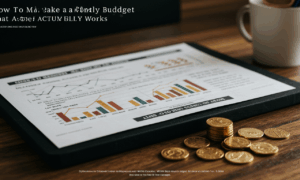Are you looking to master your finances with a proven technique? The Kakeibo method, a century-old Japanese art of saving money, offers a powerful, hands-on approach to understanding and controlling your spending. In a world of one-click purchases and invisible digital transactions, it’s easy to lose track of where our money goes. This mindful budgeting system brings clarity and intention back to your financial life. If you’ve struggled with complex apps or impersonal spreadsheets, this guide will walk you through how the Kakeibo philosophy can transform your relationship with money, helping you build substantial savings and achieve your financial goals.
At its core, Kakeibo (pronounced kah-keh-boh) translates to “household financial ledger.” Created in 1904 by Hani Motoko, Japan’s first female journalist, it was designed to empower women to manage their household finances effectively. However, its principles are universal and more relevant than ever. Unlike modern budgeting apps that automate everything, Kakeibo is a deliberately analog system. It requires just a notebook and a pen, forcing you to physically write down and confront every single expense. This simple act of writing creates a powerful psychological connection, turning mindless spending into a conscious decision.
The Core Philosophy: The Four Key Questions
The Kakeibo method is built on a foundation of monthly reflection. Before the month even begins, you sit down with your ledger and answer four simple but profound questions. This structured approach sets the stage for a month of intentional financial management.
- How much money do you have available? This is your starting point. Calculate your total income for the month and immediately subtract your fixed expenses—things you must pay, like your rent or mortgage, utilities, loan payments, and essential subscriptions. The result is your total spendable income for the month.
- How much would you like to save? This is a crucial step that prioritizes saving. Before you allocate a single dollar to discretionary spending, you decide on a savings goal for the month. This reframes saving not as an afterthought but as a primary objective.
- How much are you spending? This question is answered throughout the month. You will diligently track every purchase, no matter how small, by logging it in your notebook. This creates a real-time record of your financial outflow.
- How can you improve? At the end of the month, you review your progress. Did you meet your savings goal? Where did you overspend? This reflection is the key to making lasting behavioral changes and improving your financial habits over time.
A Practical Step-by-Step Guide to Implementing Kakeibo
Getting started with Kakeibo is straightforward. The magic lies in consistency and honesty. Here’s how to put this powerful Japanese saving method into practice today.
Step 1: Set Up Your Kakeibo Ledger
You don’t need a fancy, official journal. Any simple notebook will do. The important thing is to dedicate it solely to your finances. At the beginning of the month, set up your first page by calculating your spendable income (Income – Fixed Expenses) and writing down your savings goal, as discussed in the four questions above.
Step 2: Categorize Your Spending
Kakeibo simplifies expense tracking by using four distinct categories, or “pillars,” to classify your spending. This helps you quickly see where your money is going.
- Survival (Needs): This category includes all essential expenses. Think groceries, transportation, housing costs (if not already counted in fixed expenses), and medical necessities.
- Optional (Wants): This covers all non-essential spending that brings you joy or convenience. Examples include dining out, shopping for clothes, hobbies, and entertainment.
- Culture (Self-Improvement): This category is for expenses that enrich your mind and personal growth. This could be books, museum visits, concert tickets, or educational courses.
- Extra (Unexpected): This is for unplanned expenses, such as emergency repairs, gifts for a last-minute party, or unexpected medical bills.

Step 3: Track Daily and Review Weekly
This is the most critical habit in the Kakeibo system. Every day, take a few moments to write down every single purchase in your ledger, placing it into one of the four categories. Whether it’s a $3 coffee or a $300 gadget, it must be recorded. At the end of each week, total the spending in each category. This weekly check-in keeps you accountable and prevents you from waiting until the end of the month to realize you’re off track. It allows you to adjust your spending for the upcoming weeks.
Step 4: The End-of-Month Reflection
At the month’s end, it’s time for the final review. Tally up your total spending and subtract it from your starting “spendable income.” The amount left over is your actual savings. Now, compare this to the savings goal you set at the beginning of the month.
Ask yourself reflective questions:
- Did I meet my savings goal? Why or why not?
- Which category did I spend the most on? Does this align with my values?
- Were there any impulse purchases I regret?
- What is one change I can make next month to improve?
This process of reflection is what separates Kakeibo from simple expense tracking. It’s a tool for self-discovery that helps you understand your financial triggers and build better habits, improving not just your bank balance but your overall control over your personal finances.
The Power of Mindful Spending in a Digital World
The Kakeibo method’s insistence on pen and paper is its greatest strength. The physical act of writing slows you down, forcing you to acknowledge each transaction. This mindfulness combats the ease of impulse spending fostered by credit cards and mobile payments. By creating a tangible record of your financial life, you gain a deeper understanding of your habits and a greater sense of empowerment.
This approach isn’t about deprivation; it’s about alignment. It helps ensure your spending reflects your true priorities and long-term goals. Over time, this conscious approach to money management can significantly reduce financial stress and help you build a more secure future. For more ideas on building good financial habits, explore our other articles on savings strategies.
Disclaimer: The information provided in this article is for educational and informational purposes only. It does not constitute financial or investment advice. You should consult with a qualified financial professional before making any decisions based on the information presented here.
Frequently Asked Questions (FAQ)
Do I need to buy a special Kakeibo notebook to get started?
Absolutely not. While you can find beautifully designed Kakeibo journals for sale, any standard notebook will work perfectly. The power of the system is in the methodical process of writing, tracking, and reflecting, not in the specific tool you use. The most important thing is to start and stay consistent.
How is using Kakeibo different from a digital budgeting app?
The key difference is the deliberate, manual nature of Kakeibo versus the automation of most apps. Budgeting apps are convenient for tracking where your money has gone, as they often sync directly with your bank accounts. However, this convenience can create a passive experience. Kakeibo forces an active, mindful engagement with your finances. By physically writing down each expense, you are more likely to question the purchase and reflect on your spending habits, which is more effective for creating long-term behavioral change.



